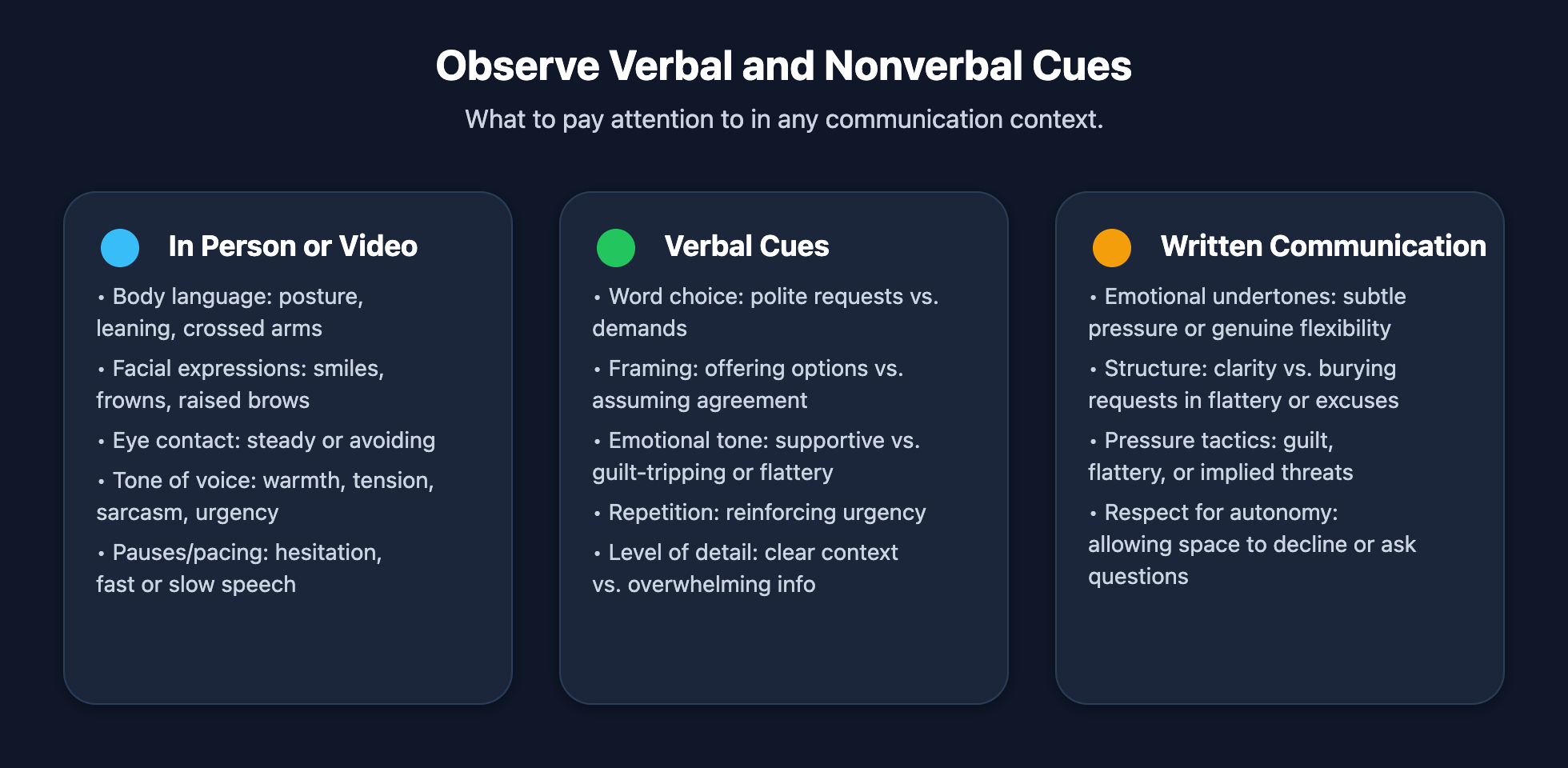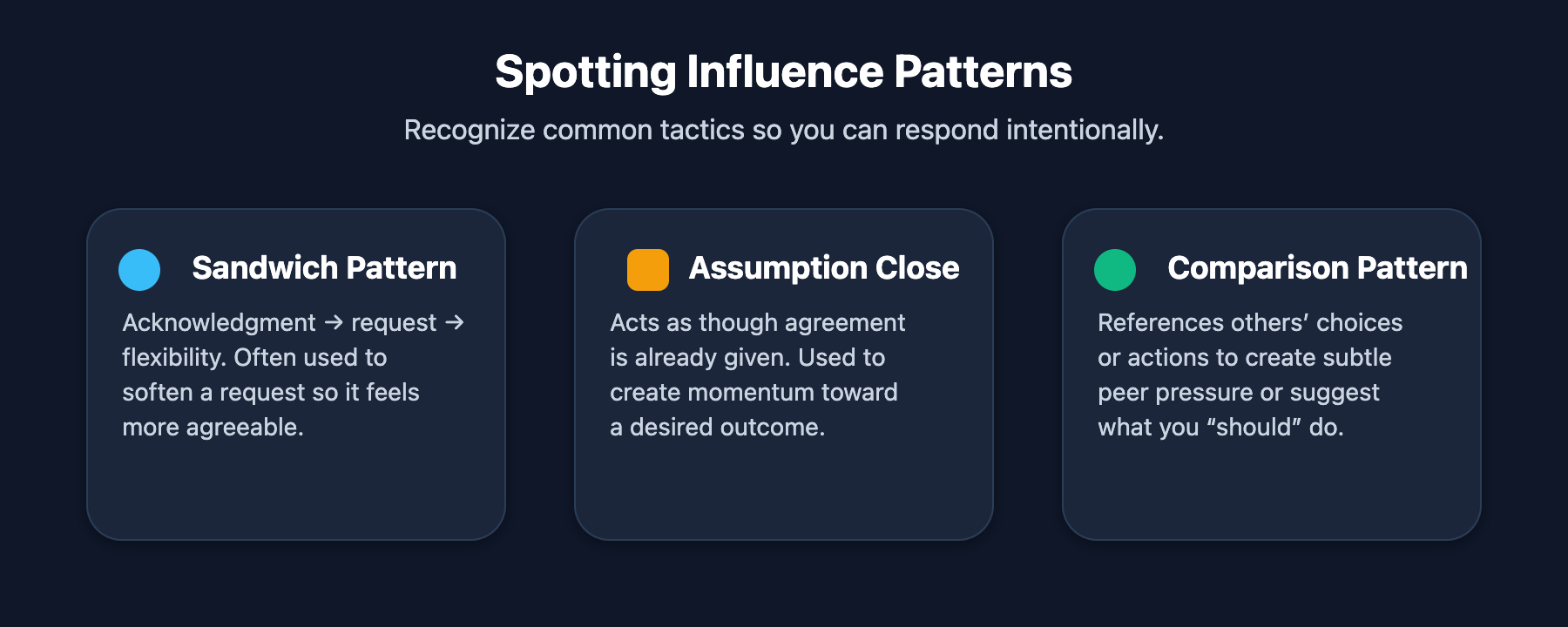Before you attempt to influence others, it’s essential to “read the room”—even in written communication. This means paying close attention to what others care about, picking up on subtle cues in their language, and adjusting your approach based on how they respond. By doing so, you can ensure your influence is both effective and ethical, and you avoid crossing the line into manipulation. The following sections will help you develop these skills by focusing on three key areas: noticing others’ priorities and motivations, observing verbal cues in writing, and adjusting your assertiveness to fit the situation.
When evaluating scenarios where you are trying to influence, your first step should be identifying the primary request or goal embedded in the message. Sometimes this appears straightforward, such as "Can you review this document by Friday?" However, the real ask often lies buried beneath pleasantries or justifications. This isn't necessarily manipulation — context matters — but recognizing the structure helps you evaluate whether the approach respects your autonomy or attempts to corner you through obligation.
To truly "read the room" in communication, pay attention to what the other person values or is focused on. Are they emphasizing deadlines, team success, personal recognition, or problem-solving? Noticing these priorities helps you understand their motivations and tailor your response or influence attempts accordingly.
In any communication—whether in person, on a call, or in writing—people give off verbal and nonverbal cues that reveal their true feelings and intentions. Here’s what to look out for in each context:

Pay close attention to the emotional tone and pressure tactics within the message. Healthy influence maintains professional respect even when expressing urgency. Manipulation, however, weaponizes emotions through guilt, flattery, or implied threats.
Recognizing patterns in written communication helps you adjust your own approach. For example, if you notice the recipient is overwhelmed or hesitant (perhaps they respond slowly, ask clarifying questions, or express concern about workload), it’s a cue to dial back assertiveness and offer flexibility: If this week is too busy, let me know what works for you. If the other person responds positively and quickly, you can be more direct in your requests.
Patterns such as the sandwich pattern (acknowledgment, request, flexibility), assumption close (acting as if agreement is given), and comparison pattern (referencing others’ actions) all provide insight into how influence is being attempted.

Recognizing these allows you to respond appropriately—either by clarifying, setting boundaries, or matching the level of assertiveness. To see these concepts in action, consider the following conversation between two colleagues as they analyze a message from their project lead. Notice how they identify the influence patterns, discuss what’s missing, and compare manipulative versus healthy approaches. This kind of analysis helps you become more aware of subtle cues and adjust your own assertiveness in response.
- Natalie: Did you see the email from the project lead? Since you're so good at presentations, I've volunteered you to present to the board tomorrow.
- Dan: Yeah, that's definitely manipulation. They made the decision without asking me first.
- Natalie: Plus, notice the flattery followed immediately by the assumption I'd agreed? Classic sandwich pattern.
- Dan: Right, and there's no mention of preparation time needed or even what I'd be presenting about.
- Natalie: Exactly. Compare that to last week when they asked, Would you be willing to present if I helped you prepare? That was healthy influence.
- The difference is consent and transparency. This email traps us with social pressure instead.
